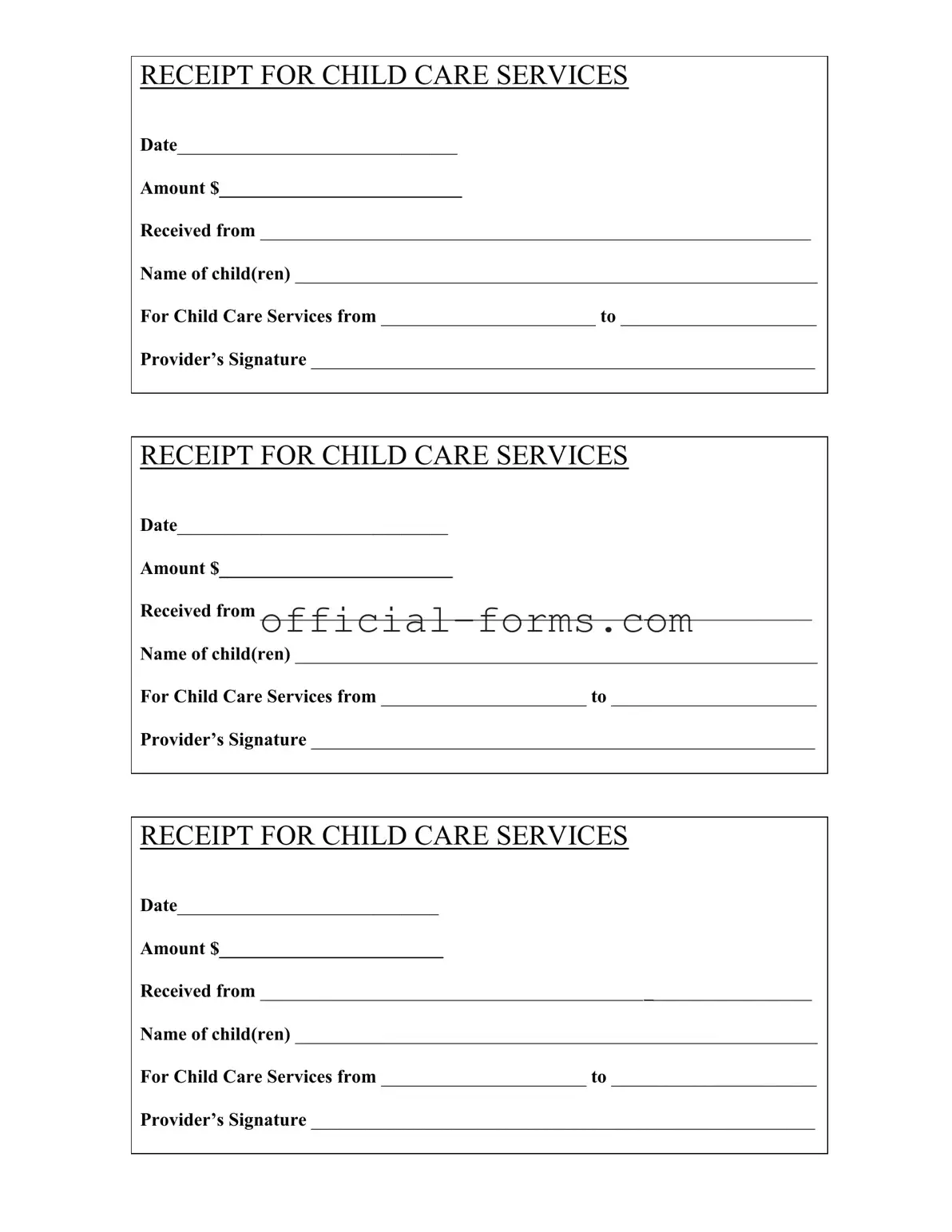Filling out the Childcare Receipt form can seem straightforward, but many people make common mistakes that can lead to confusion or delays. One frequent error is leaving the date section blank. This date is essential as it indicates when the services were provided. Without it, the receipt may not be valid for record-keeping or tax purposes.
Another common mistake is failing to include the amount paid for childcare services. This figure is crucial for both the provider and the recipient. Omitting it can result in disputes about payment and may complicate financial records.
People often overlook the section for the name of the child(ren). This information is vital for identifying the services rendered. If this section is left blank or filled out incorrectly, it can create confusion, especially if multiple children are involved.
Many individuals forget to specify the dates of service. This section should clearly outline the range of dates when childcare was provided. Missing this information can lead to misunderstandings about the duration of services and the corresponding charges.
Another mistake is neglecting to obtain the provider's signature. This signature serves as confirmation that the services were indeed rendered. Without it, the receipt may not hold up as proof of payment or service in case of an audit.
Some people also make the error of not keeping a copy of the completed receipt. It’s important to retain a copy for personal records. This helps in tracking expenses and can be useful for tax deductions.
Another issue arises when individuals use illegible handwriting. If the information is hard to read, it can lead to misunderstandings. Clear and neat writing ensures that all parties understand the details of the transaction.
Additionally, people sometimes fill out the form in a hurry, leading to incomplete information. Each section should be filled out thoroughly to avoid any confusion later on. Taking the time to complete the form carefully can save a lot of trouble down the line.
Finally, failing to review the completed form before submission can lead to various errors. A quick check can catch mistakes and ensure that all necessary information is present and correct. This final step can prevent potential issues with documentation in the future.
